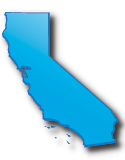California Rebates and Incentives Summary

If you own property in California and are interested in going solar you’re in luck. Home and business owners in California have a bevy of incentives to choose from to install solar power. California’s robust renewable portfolio standard (RPS), which requires all utilities in the state to source 50 percent of their electric generation from renewable resources by 2030, is a leading driver for the incentives offered throughout the state. Incentives in California are offered by utilities, the state, counties and even some municipalities. A very popular option in California are residential power-purchase agreements or leases, which allow third-parties to own the system and give the home or building owner a fixed price for the system or the electricity it produces over the lifetime of the contract, which can range from 10 to 25 years. Basically, there’s something out there for almost everybody in the Golden State.
In most cases, the state wants homeowners to maximize the efficiency of existing systems on the property—like insulation, windows, and appliances—before installing solar. Bearing that in mind, those seeking to participate in one of California’s solar-power incentives should get an energy audit of their home to make sure it meets or exceeds California’s current HERS building efficiency standards.
In addition, those with solar systems can exempt the equipment from their property taxes, they can also net-meter with their local utility selling excess electricity their system puts on the grid to the power company, and they even get reimbursed for a chunk of the cost of purchase and installation through the California Solar Initiative. However, the popularity of solar in California has led to significant drops in the amount of money available for reimbursement. While such subsidies are subsiding, however, the drop in the cost of photovoltaics and rising energy costs mean that solar remains an incredibly attractive option in the state.
